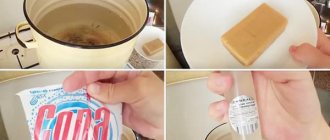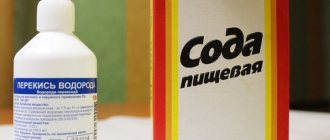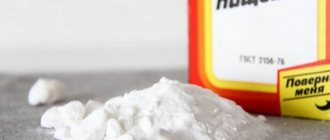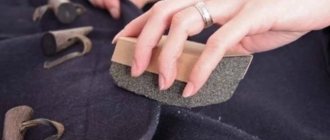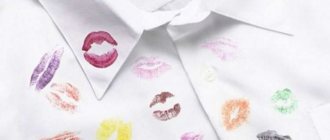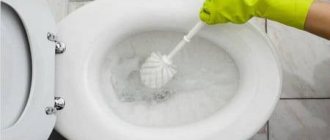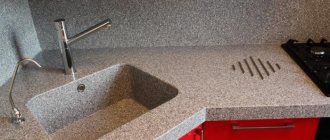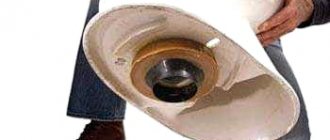- What is tartar
- How is tartar formed?
- Types of Tartar
- Symptoms and consequences of tartar
- How to prevent tartar formation
- Methods for removing tartar
- How is tartar removal performed?
- Removing tartar at home
- Side effects from scaling
- Proper brushing of teeth
- Prices for tartar removal in Moscow
What is tartar and what is the cause of the disease. What methods will help eliminate this aesthetic problem. Is it possible to remove formations without resorting to the help of a dentist?
What is tartar
Tartar is a formation that is a keratinized plaque consisting of poorly removed food debris, calcium, phosphorus and iron salts covered with a biofilm of dead bacteria.
You can find fossilized food deposits over the entire surface of the dentition, but most often the concentration is on the lower incisors, closer to the gums and on the sides.
Please note that tartar can penetrate the back wall and inside the gums. It is usually found in hard-to-reach places where it is impossible to remove food debris with a toothbrush.
Aerator maintenance and cleaning
If the water pressure decreases while using this nozzle, you should check the condition of the aerator. As a rule, the cause of such a negative phenomenon is a clogged filter mesh. In this case, you only need to clean the product, but if it is very clogged and there are defects on its surface, you need to purchase a new faucet aerator.
Let's look at the procedure for cleaning the part.
- Remove the aerator using a mechanic's wrench or pliers. To do this, you need to grab it with a key and turn it clockwise.
To eliminate the possibility of scratches on the faucet cover during dismantling, you should first wrap the head of the product with electrical tape.
- Pull out and assess the condition of the rubber gasket. Next, you need to remove the mesh filter from the cylinder and rinse it under running water, and also thoroughly clean the device using a needle or thin awl.
In case of severe indelible contamination, the aerator is chemically cleaned. To do this, the mesh filter is placed in apple cider vinegar and kept until the deposits are completely dissolved.
- Assemble and install the aerator in its original position. After this, you should check that the part is installed correctly. Namely, open the water and check the connections for leaks; if a leak is detected, you need to tighten the aerator using pliers.
If the above procedures for cleaning the aerator do not bring the desired result, replace it. To do this, unscrew the old device using a wrench, then install a new one in its place. This process will not take more than 20 minutes, and a properly equipped faucet will reduce water consumption by 15%, thereby reducing the consumption of the family budget.
To wash a chrome surface, they use not only industrial products, but also wash it the old fashioned way with soda, vinegar or citric acid. When choosing household chemicals, you need to read the composition; faucets cannot be washed with products containing active acids, alkali and chlorine, as this will cause the coating to become cloudy and covered with dark spots. Below we will talk about how to clean the faucet from limescale without damaging the chrome layer, how to restore the damaged coating, clean the aerator, shower holes and what to do if the faucet is jammed.
The cause of limescale deposits is calcium and magnesium salts, which are contained in excess quantities in tap water. A whitish coating spoils the appearance of plumbing fixtures and sometimes even leads to faucets jamming and shower head openings becoming clogged with scale flakes.
Soap deposits and limescale are not a big problem, even if the holes in the aerator or shower head are clogged. Any housewife can cope with this task on her own without the help of a plumber.
It is much more difficult to choose the right products to care for chrome surfaces in the kitchen and bathroom. Mistakes in choosing household chemicals can result in a dull surface, scratches and black spots; it is very difficult to restore such plumbing fixtures. You will have to put up with the damaged coating or replace all the damaged parts with new ones, which will cost a pretty penny. How to choose the right product:
- Never scrub plumbing fixtures with steel wool, even if it seems to you that all other means will be powerless. It only seems like it to you!
- The product should not contain abrasive particles; the only thing that can be used is a paste of baking soda or table salt.
- Products containing acids will spoil the chrome surface, black spots will appear on it, and a little later, possibly rust. Particularly dangerous are hydrochloric, phosphoric and sulfuric acids, as well as chlorine and alkalis. But vinegar and citric acid will not ruin your plumbing; they can be used without fear. If, as a result of the wrong choice of cleaning products, your taps have already suffered, then at the end of the article you will find a recipe that will help mask the traces of inept handling of household chemicals.
- Do not mix different industrial products with each other, otherwise you risk getting an unpredictable result.
- When choosing a product, make sure that it is suitable for chrome-plated products, and strictly follow the instructions during use.
How is tartar formed?
Food particles attach to tooth enamel. Most often from soft and sticky foods, such as flour products.
Under the influence of saliva, a film of glycoproteins is formed; if you do not rinse or brush your teeth, then after 4 hours streptococci bacteria come into play, and actinomycetes join them. After 2 days, streptococci decrease, but the number of anaerobic bacteria increases. After 7 days, spirochetes and motile rods appear.
Remains of food and the bacteria that multiply on them are gradually covered with a film of saliva, smoothed out and hardened. Tartar grows because new layers are added to existing particles.
Fermentation and metabolism processes occur under dental plaque, during which acids are formed. They weaken tooth enamel so that tooth decay can develop over time.
Tartar can also cause bad breath.
Plaque can eventually turn into tartar through mineralization—minerals from saliva are deposited in plaque and make it very hard.
This is how complications arise; as a result of a neglected condition, you can lose a healthy tooth, but ringed with plaque.
The rate of mineralization varies from person to person. It all depends on the following factors:
- the amount of saliva produced;
- its composition and activity of secretions;
- quality of oral hygiene;
- nutritional characteristics;
- violation of salt exchange in the body;
- wearing dental structures (prostheses);
The predominance of solid foods (raw vegetables) significantly reduces the development of plaque. The products act as a cleaning agent, helping to remove dirt from the enamel. Chewing for a long time releases more saliva, which has an antibacterial effect.
Silit Bang
This is a professional chemical agent against limescale stains, which must be highlighted separately. The main active component is hydrochloric acid. It is a gel liquid that is designed to remove plaque that is difficult to remove. It is also capable of removing rusty stains; it also ideally whitens and disinfects plumbing fixtures.
Types of Tartar
Fossils on enamel come in different types depending on location. So they distinguish:
- supragingival stones – formed on the first molars (lateral) and front or lower teeth;
- subgingival - hard areas that penetrate soft tissue;
- stone bridge – covering the main and adjacent teeth.
Symptoms and consequences of tartar
Patients experience the following symptoms:
- bad breath;
- bleeding gums;
- caries;
- purulent discharge;
- gingivitis;
- pulpitis;
- periodontitis – inflammation of tissue areas near the root of the tooth;
- mobility and tooth loss.
Gingivitis
The initial form of gum disease.
If left untreated, gingivitis can develop into periodontitis, which is a serious, irreversible gum disease and the most common cause of tooth loss in adults.
The main 4 signs of gingivitis:
- Bleeding gums. Healthy gums do not bleed. If blood comes out when using a toothbrush or floss, this may indicate the onset of gingivitis. Even if it happens from time to time. The symptom should not be ignored as it may be a sign of the onset of gum disease.
- Unpleasant smell. There are many reasons for a bad odor: specific foods, poor hygiene, but it can also be the first sign of gingivitis. This is due to the fact that the bacteria that cause gum disease produce an unpleasant odor by breaking down food particles in the mouth.
- Swollen gums. They are usually pink and firm. Redness and swelling may indicate the onset of the disease.
- Receding gums. They begin to separate, and the root of the tooth is exposed, the incisors appear longer. Increased sensitivity is another sign.
A common cause of toothache is inflammation of the dental nerve, called pulpitis. Anyone suffering from this should seek help from a dentist as soon as possible.
Pulpitis
In acute pulpitis, pain usually occurs spontaneously. The pain may be constant or occur periodically. In rare cases, the inflammatory process is completely painless.
If the affected tooth is sensitive to pressure and impact, this is a sign of a dead dental nerve. It hurts when you touch the tongue, but especially when you squeeze it. The pain is often worse at night, as the warmth of the bed increases the inflammatory process. If left untreated, bacteria from the medullary cavity of the tooth can penetrate through the hole at the root tip into the surrounding bone and soft tissue. Accordingly, inflammation spreads, the cheek and lymph nodes swell.
Periodontitis
Periodontal disease is defined as chronic inflammatory disease of the gums. It is mainly caused by bacterial plaque (biofilm, plaque), especially in old age.
As a result of inflammation, your teeth may hurt and your gums may bleed more easily. If left untreated, periodontitis can also lead to tooth loss.
Patients with periodontitis usually show few symptoms at first. However, some signs may indicate the disease:
- bleeding gums;
- red and swollen gums;
- Gum recession;
- open and sensitive necks of teeth;
- putrid odor from the mouth;
- unpleasant taste, especially when pus leaks from the inflamed areas;
- The spaces between the teeth widen;
- loose teeth, misaligned teeth.
Laying expanded clay concrete blocks
A layer of cement-sand mortar is applied to the pre-waterproofed surface, then laying of the first row begins.
Laying starts from the corner. Moreover, adjacent corners must be connected with fishing line or cord. This will serve as a kind of level. Due to the fact that expanded clay concrete blocks do not have an ideal shape, there is a need to constantly check the horizontal and vertical positions of each row. The construction of walls from expanded clay concrete blocks occurs according to the principle of a designer, the second and subsequent rows are laid with dressing. It makes sense, already in the process of laying the first row of external walls, to simultaneously lay the interior partitions to connect them with the load-bearing walls.
According to the technology, after laying three rows of spoons, the next row is made with a splice row. Thus, the thickness of the wall will correspond to the length of the block. When walls are erected, it is worth filling the block voids with insulation: polystyrene chips or fine expanded clay. Recently, manufacturers have begun to produce three-layer blocks, where the insulation is already installed. This simplifies the work and ensures good insulation of the walls. If your region has a harsh climate, then the external walls can be laid out from two parallel walls, which are connected to each other using reinforcement. Insulation must be poured into the empty space.
How to prevent tartar formation
By observing good oral hygiene, you can prevent the (re)formation of tartar:
- Brush your teeth thoroughly at least twice a day using a good manual or electric toothbrush and fluoridated toothpaste.
- Clean between teeth once a day using dental floss or interdental brushes.
- With these measures it is possible to prevent the formation of plaque and therefore tartar, as well as to prevent tooth discoloration and decay.
Cleaning tiles
The tiles in the bathroom are constantly exposed to high temperatures and high humidity, so plaque forms on it. The use of household chemicals with an aggressive composition only aggravates the situation - the surface becomes dull and loses its original shine.
In order not to make a mistake when choosing a detergent, you need to pay attention to the material from which the tiles are made:
Ceramics have a smooth surface and are easy to clean. The simplest way: dilute 100 g of citric acid in a glass of water, apply to the surface with a spray bottle, and after drying, rinse with clean water.- The glass coating is also easy to maintain; the best results are achieved with an industrial ammonia-based glass surface cleaner. The liquid must be sprayed onto the surface, rinsed off after 5 minutes and wiped dry.
- Acrylic is a capricious material. Professional products are recommended for this. Acrylan from Bagi, a foam product that will clean tiles even without using a sponge. It must be applied to the surface, then rinsed thoroughly with clean water.
To prevent the formation of limescale on the tiles, it is enough to wipe the tiles dry every time after taking a bath or shower.
Methods for removing tartar
- Physical method. Consists of mechanical destruction of deposits using a dental instrument with a thin tip. Modern medicine uses the Air flow system. Fine particles of soda are applied under high pressure, causing a stream of air containing the powder to knock the fossils off the tooth. A subsequent stream of water washes away the separated particles.
- Chemical method. Allows you to remove formations with the help of compounds that dissolve the basis of tartar - deposits of mineral salts. A composition is applied to the teeth that softens plaque, but does not cause significant harm to the enamel. Then the impurities are removed.
- Ultrasound. Ultrasonic waves do not injure teeth and gums. Contraindicated in patients using a pacemaker.
- Laser. The laser method can be used specifically in dentistry for various procedures. It is one of the most effective and expensive procedures. The laser beam is very thin and can be used precisely. This way, only truly unwanted tissue is destroyed. Healthy tissues are preserved. Local anesthesia is often not required. Laser treatment does not cause noise or vibration like drilling. The virtually painless treatment is especially suitable for anxious patients.
Analysis of the mixer
If you need to clean the inside of the faucet in order to remove deposits on the moving elements, you should first determine the type of faucet. Today mixers are divided into the following types:
- Single-lever - this type is convenient to use in the kitchen, when it is easier to lift the lever with dirty hands than to turn the knobs.
- Two-valve is a convenient option for bathrooms when more precise adjustment of the water temperature is required.
Let's figure out how to disassemble such faucets to gain access to cartridges and faucet axle boxes.
Single lever
To disassemble and clean a single-lever kitchen faucet, follow these instructions:
- Turn off hot and cold water using a faucet or lever under the sink.
- Remove the red and blue plug under the lever.
- Using a thin hex wrench, remove the screw.
- Remove the nozzle with the lever upwards.
- Unscrew the skirt covering the contents of the mixer.
- Use an adjustable wrench to unscrew the clamping nut.
- Remove the mixer cartridge upwards.
- Check the gaskets at the bottom of the mixer cartridge and, if necessary, replace them or the entire cartridge, which are available for sale in plumbing stores.
- After cleaning and replacing, reassemble the mixer in the reverse order.
Two-valve
For disassembling and cleaning a bathroom faucet with a two-valve design, instructions are given below:
- Turn off the cold and hot water taps.
- Unscrew the nuts connecting the mixer to the riser pipes (for chrome-plated parts, the nuts can be wrapped in a damp cloth to prevent scratches).
- Remove the mixer.
- Remove the plugs covering the wing screws.
- Unscrew the screw and remove the wing from the rod.
- Using an adjustable wrench, unscrew the valve axle from the mixer.
- In the same way, remove the second faucet and the switch, which is a ball mixer that transfers the flow of water from the faucet to the shower head.
- Using an adjustable wrench, unscrew the nut securing the gooseneck to the mixer.
- Unscrew the shower hose nut using an adjustable wrench.
- Unscrew the shower head by hand.
- Clean or replace gaskets on the switch, faucet axle boxes and joints of the hose, gander and shower head.
- If the mixer was leaking, replace the faucet axleboxes.
- If the shower head was leaking in the “faucet” mode, the shower switch must be replaced.
- Clean all elements from rust and deposits with detergent.
- Reassemble and reinstall the mixer in the reverse order.
How is tartar removal performed?
At the first stage, the presence or absence of allergies in the patient to drugs will be determined.
Then the degree of sensitivity of the teeth is determined, and an anesthetic is applied as necessary.
The method by which the procedure will be carried out is selected.
For rough tartar removal, an ultrasonic scaler is often used first. This is followed by processing with special hand tools to remove stubborn dirt.
The enamel is cleaned of residual particles of contamination and the doctor begins to polish the teeth so that the surface is completely smooth.
Small irregularities and areas of rougher texture on the teeth are also smoothed out, providing protection against further plaque buildup.
The enamel of the teeth is coated with varnish.
After the work has been done, the dentist will advise how often you should plan to remove tartar.
It should be noted that professional cleaning is only intended to be an addition to daily thorough oral hygiene and should in no way be considered a replacement for brushing your teeth twice daily with fluoride toothpaste.
Vinegar
The advantage of vinegar when cleaning faucets from limescale is the speed of its action.
We invite you to familiarize yourself with the Drawings for washing on clothes, interpretation table
Instructions for use:
- mix 9% vinegar and water in equal proportions;
- wet a soft cloth with the resulting solution;
- wipe the surface of the plumbing fixtures;
- leave for a few minutes;
- Rinse the cleaned areas with running water or a damp cloth.
If the contamination is strong, then you can use another method:
- heat the vinegar poured into a container;
- moisten a cloth with hot vinegar and wrap the tap in the area where plaque accumulates;
- wait a couple of hours;
- After the allotted time has passed, remove the compress and wipe the surface with a clean damp cloth.
A vinegar compress can even cope with old limescale deposits.
Removing tartar at home
Home remedies for tartar can be useful for removing soft plaque without the help of a dentist.
If there is already a hard coating, then you should definitely seek treatment from a specialist. Trying to pick out deposits on your own will not work. As a result, the enamel will only be damaged. It cannot be restored.
- Vinegar and lemon. The acid contained in vinegar and lemon acts against tartar. However, the taste is unpleasant, and the acid has an aggressive effect on tooth enamel. These home remedies should be used no more than once a month.
- Baking powder. The crystals found in baking powder and baking soda act like sandpaper and remove unwanted coating. Dip your fingertip in baking soda and vigorously rub the affected areas. However, the powder can potentially damage healthy gums and tooth enamel.
- Tea tree oil. Rinse your teeth thoroughly with a solution of 1-2 drops in a glass of warm water.
- Xylitol. Xylitol is a sugar substitute and, as an ingredient in chewing gum, can support oral hygiene. Research shows that xylitol is beneficial for dental health.
- Tincture of myrrh. Has a preventive effect. Brush sensitive areas along the gum line to reduce acid buildup. The liquid is also used for gum inflammation caused by tartar or its removal.
- Coconut oil and olive oil. Take one or two tablespoons of natural oil into your mouth and thoroughly rub the liquid between your teeth for several minutes. You must be careful not to swallow it and then rinse your mouth thoroughly with clean water.
- Sesame seeds. Chewing sesame seeds vigorously provides the body with healthy fats and also helps against the formation of tartar. Apply the well-fertilized seed paste several times to the affected areas of the teeth, using your tongue as a tool to create the necessary friction for grinding.
- Celandine. A good remedy not only for skin diseases, but also helps cleanse teeth of plaque. Prepare a decoction and rinse your mouth without swallowing. The plant contains toxins that can harm the stomach.
- A mixture of lemon juice and black radish. Suitable for treatment and preventive measures. Apply to teeth, then rinse with warm water. You cannot clean with a brush after acidic juice, because it softens not only the stones, but also the enamel. You need to wait 30 minutes.
- Decoction of burdock and green beans. Burdock can be picked locally or purchased dry crushed leaves at the pharmacy. The combination of these plants will help soften the stratum corneum.
- Dental floss. You can use it to thoroughly and permanently clean hard-to-reach spaces between teeth.
How to quickly remove plaque
Chemicals and traditional methods help fight limescale deposits.
The cleaning agent is chosen depending on the type of product, since the fragile coating (glass and mirror) can deteriorate when using professional chemicals.
From plastic and acrylic
Plastic and acrylic products require delicate cleaning, so plaque removal is carried out with special substances. To minimize contact of the substance with the surface, cleaning is carried out every day.
For this use:
- Bass. To clean plastic and acrylic, there is a special liquid product called Bass on sale. It is sprayed onto the lime stains and left for 15 minutes. Then rinse thoroughly. Suitable for daily use when removing soap scum.
- "Akrilan" . The substance is intended for cleaning acrylic bathtubs and shower stalls. It quickly dissolves mineral stone and salt traces from the surface, protecting plumbing fixtures from the formation of new plaque. The liquid is applied to the product with a spray bottle or sponge, then washed off. The use of Acrylan together with other cleaning substances is not allowed.
All cleaning chemicals are used according to the instructions indicated on the label.
From mirrors and glass
Mirror and glass items require special handling as they are very fragile. Therefore, stone deposits are removed with pastes and creams designed for gentle cleaning.
Products containing grains cannot be used, as they leave small scratches on the product.
Cleaning glass products:
- "Mister Muscle". The product easily removes dirt and leaves no streaks behind, because Mister Muscle contains ammonia. It is sprayed onto a mirror or glass, then wiped with paper.
- "Sif." This is a creamy substance that effectively combats the layering of water stone. It is applied to the glass surface, rubbed with a sponge and washed. After using it, the smell of lemon remains in the room.
To avoid having to wash everything, do not rub the glass with a fluffy cloth.
Cleaning chrome taps and pipes
You can remove limescale from chrome pipes, taps and shower heads using vinegar. This method is good for removing dirt in hard-to-reach places.
Be sure to read:
Limescale and urinary stone in the toilet: how to remove it and how to clean it at home?
Mode of application:
- Vinegar is diluted in warm water in a 1:1 ratio.
- A piece of rag is moistened in the prepared solution and the contaminated area is covered with it.
- To prevent the rag from falling, it is secured with an elastic band and left in this position for 4 hours.
- If it is necessary to clean the shower head, unscrew it and place it in a container with vinegar solution for 30 minutes.
- After time has passed, the part is washed under water, and the remaining lime is removed with a dry cloth.
The deposit will come off faster if the dirty area is pre-treated with steam.
Tile, ceramics, cast iron
For each type of product, you can choose the most effective and safe method for removing lime.
Cleaning different materials:
- Ceramics. Plumbing fixtures made of ceramic material cannot be cleaned with powders that contain large particles, as they leave scratches on the products. Substances in the form of cream or gel carefully care for ceramics. A mixture of vinegar, ammonia and soda is also used. Ammonia (5 tbsp), vinegar 9% (4 l), soda (7 tbsp) are diluted in 1.3-1.5 liters of water. The finished mixture is poured into a spray bottle and sprayed onto the contaminated area. After 30 minutes, wipe with a rag.
- Cast iron. Lime from cast iron plumbing can be easily removed with soda and vinegar. Soda is poured onto the dirt and vinegar is sprinkled on top. Everything is washed after 30 minutes. Bleach (powder) is used from store-bought products. It is added to water, a small amount is applied to the water stone. After 15-20 minutes, wash off. If the cast iron product is damaged or old, these cleaning methods cannot be used.
- Tile. To treat smooth tiles, use a solution of table vinegar. It restores the original shine and cleanses well the dirt in the joints between the tiles. Light deposits are removed with detergent or liquid soap. The sponge is soaked in the product, then the tiles are wiped with it and washed off with water. Do not use cleaning abrasives or powders as they will cause scratches.
Side effects from scaling
These effects can appear after professional removal and when using folk remedies.
- Uncomfortable sensitivity from ultrasound: Some patients are sensitive to pain from ultrasound because the dental nerve or gums may be irritated. In addition, some people are bothered by accompanying sounds.
- Temperature Sensitivity: Once plaque is removed, teeth may be more sensitive to stimuli such as cold or heat. This is because tartar protects the tooth from these irritants. After removal, he first needs to get used to the intensity of the stimuli.
- Loose teeth: If you begin to notice loose teeth after tartar removal, especially the incisors, this may be a sign of periodontitis, which was previously unrecognized because the tartar was holding the teeth together. Depending on the severity of periodontitis, the dentist treats the bacterial infection of the periodontium with medications.
Preventive measures
The best method of prevention is careful hygiene. Basic rules that should be followed to prevent the formation of stones and other problems with teeth are as follows:
- Teeth must be brushed after every meal;
- Before using the paste, you should use dental floss, since the brush cannot penetrate into all the spaces between the teeth;
- If you can't floss outside the home, you can chew chewing gum.
Proper brushing of teeth to remove plaque
Bass technique has been developed to remove food debris from the gum area. It is performed according to the following algorithm:
- Apply paste to brush
- Rinse your mouth with water
- Position the brush parallel to the teeth
- Slightly tilt the brush approximately 45 degrees.
- Move the device without pressing
- Then move in a circle, trying to get the bristles between the teeth
- Go over the entire jaw 15-20 times
- Move in a circular motion along the side teeth
- Do not ignore your tongue; 80% of pollution accumulates on it.
- Remove plaque from tongue
- There are brushes with a rough or bumpy back wall, specially made for cleaning this organ.
- After the outer part is completed, it is necessary to move on to the back wall of the incisors and molars. To do this, the brush is placed vertically with its bristles.
- It is recommended to carry out the procedure near a mirror to see the correctness of your actions.
As you can see, problems in the oral cavity and teeth occur in most cases due to non-compliance with hygiene rules.
Residues of food and the accumulation of bacteria on them create a plaque that hardens over time and cannot be removed by regular cleaning.
This is not only an aesthetic defect, but also serves as the basis for the development of dangerous diseases.
Brushing your teeth twice a day and regular dental check-ups will help reduce the risk of formations.
Tips for housewives: what to pay attention to when cleaning?
White water deposits can be seen in almost any bathroom. It appears due to the increased content of calcium and magnesium in water. When it gets onto taps and plumbing fixtures, it is deposited in the form of a cloudy white scum. If you do not clean it in a timely manner, your plumbing may become clogged and become unusable.
If in the case of a shower head or faucet aerator the housewife can solve the problem herself, then difficulties arise when cleaning chrome surfaces. Such coatings must be cleaned with care. It is recommended to follow the following rules when washing them:
- Do not use metallic hard sponges to clean taps and plumbing fixtures. The resulting scratches will be impossible to remove.
- When choosing a chemical or traditional cleaning method, do not use abrasives that damage the surface.
- If household chemicals contain hydrochloric, sulfuric or phosphoric acids, do not use this detergent. The consequences after it are as follows: the appearance of dark spots, as well as rust, which will be difficult to remove.
- You should not mix several cleaning compounds at once yourself - there is a high risk of damaging the chrome coating with such combinations.
- Ask your store consultant about special detergents for chrome. It is better to choose a substance, even if it is more expensive, but intended specifically for a specific situation.
If you choose the wrong product, damaged plumbing will have to be replaced, which will result in large costs. At the end of the article, a recipe for a composition will be presented that will help restore chrome products with minor scratches.
Prices for tartar removal in Moscow
| Removal of dental plaque (1 tooth) | 150 rub. |
| Ultrasonic cleaning (1 jaw) | 2000 rub. |
| Comprehensive professional preventive oral hygiene (including ultrasonic cleaning, Air Flow, polishing and fluoridation) | 5500 rub. |
| Polishing 1 tooth with abrasive paste | 500 rub. |
| Local enrichment of the 1st tooth with fluoride | 300 rub. |
| Fluoridation (1 jaw) | 2000 rub. |
| Air-flow (1 tooth) | 250 rub. |
| Air-flow (1 jaw) | 2000 rub. |
